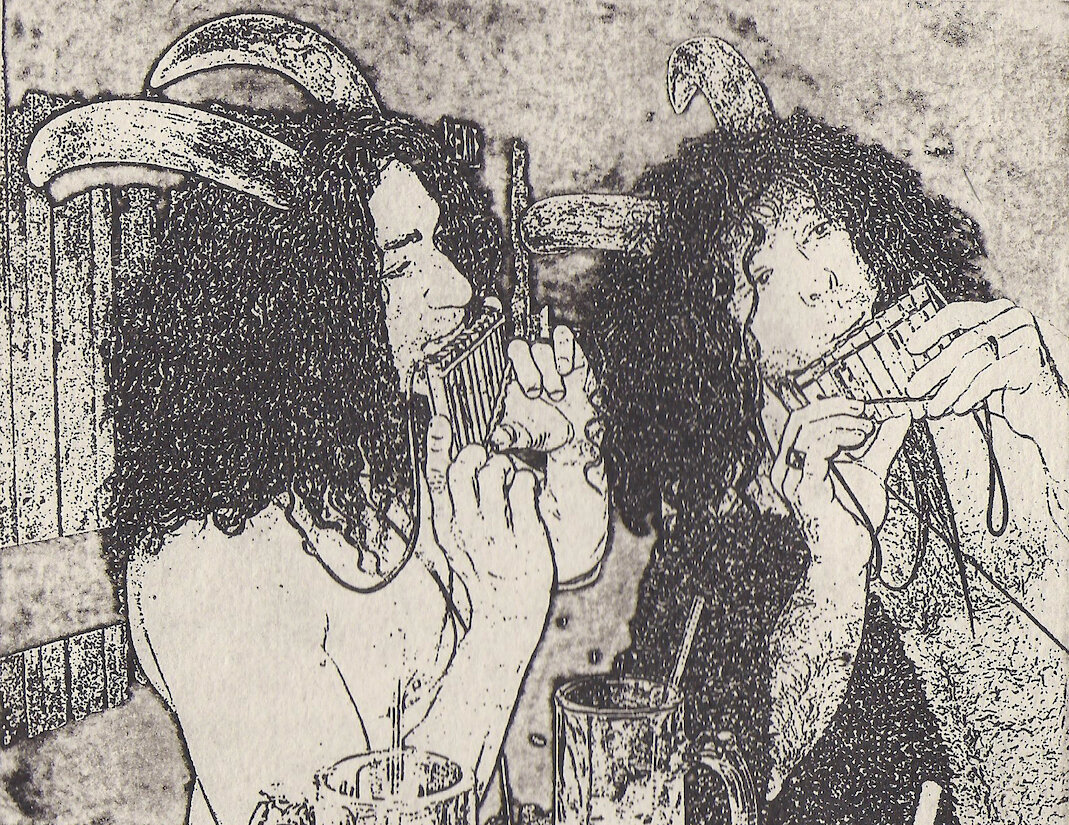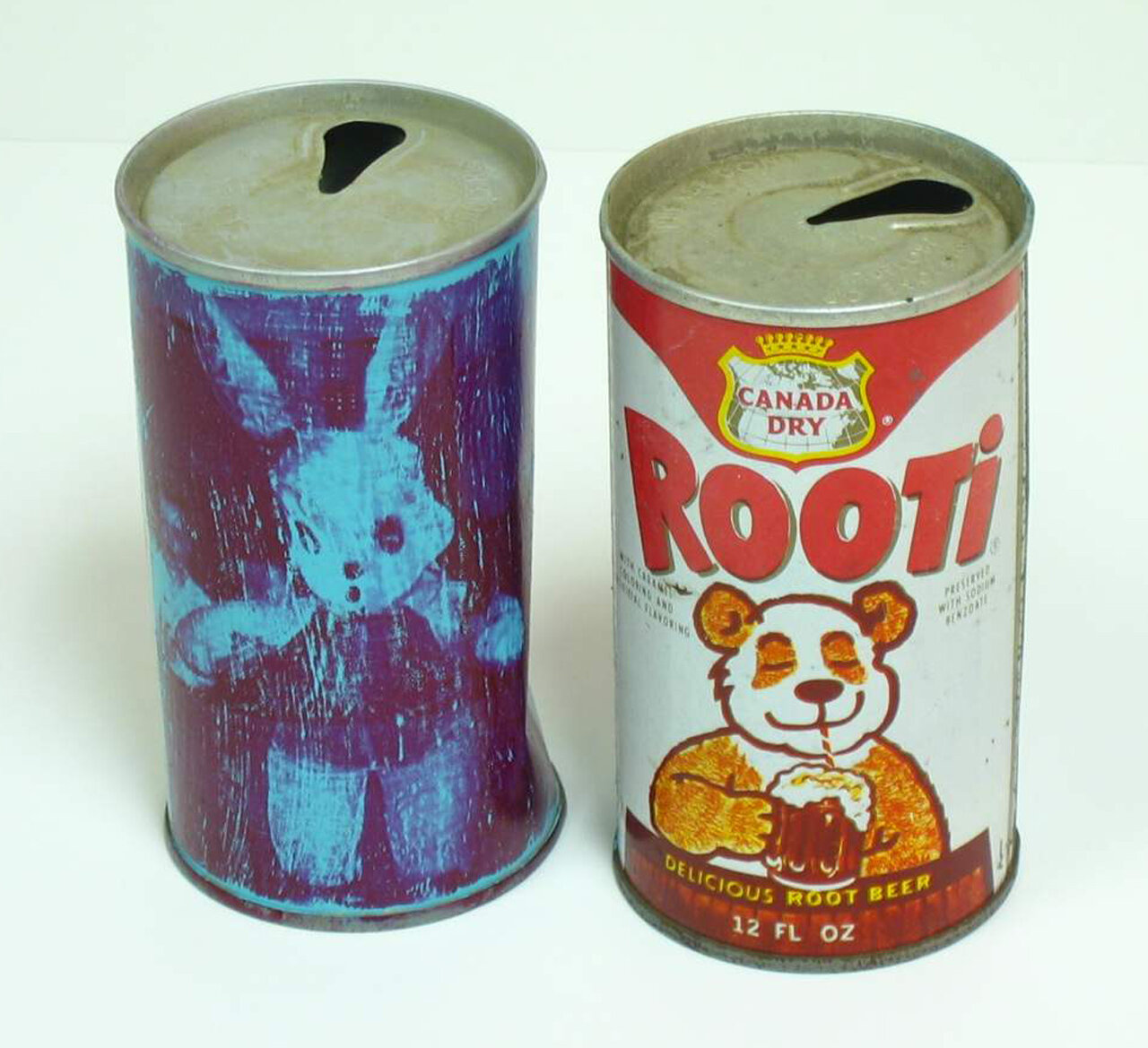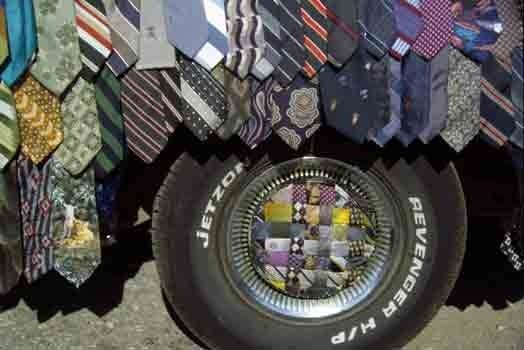Interview with artist and curator Brad Cushman
Brad Cushman was hired by the University of Arkansas, Little Rock (UALR) in 2000 to serve as Gallery Director and Curator in Department of Art and Design. Brad is an accomplished experimental and conceptual artist whose Pop Art has attained national recognition. His curatorial work has extended beyond the UALR Cushman Gallery. Brad has curated some of the most important exhibitions in the state and his curatorial expertise is in high demand and keeps him very busy. Still, he always makes time for students and to support underrepresented artists. To see more of Brad’s artwork visit Boswell Mourot Fine Art in Little Rock. (Profile photo by Cindy Momchilov)




AAS: Brad, you have been at UALR and the Department of Art and Design since 2000. What brought you to UALR?
BC: In the mid 1980s, Little Rock appeared on my radar. My undergraduate professor Jack Harrington became the department chair at UALR and I met ceramicist Laura Phillips at grad school. We were both studying at Cranbrook Academy of Art in Michigan. I moved to Little Rock with my MFA in painting and taught part time at UALR and UCA for a couple of years. I also taught at a Catholic high school in my hometown of Springfield, Illinois during this time. In 1988, I moved to Durant, Oklahoma to teach at Southeastern Oklahoma State University. I worked there for 12.5 years and served as department chair for 8.5 years. Dallas/Fort Worth was 90 miles down the road and I began to tap into the contemporary art scene in Texas. By 2000, I was ready for a change, applied for the position of gallery director and curator at UALR and they offered me the job.
AAS: Before we talk about your own art, talk about the art galleries at the UALR. They exhibit works from the UALR collections, visiting artists as well as students?
BC: The gallery program functions like a museum highlighting contemporary art, applied design, and occasionally historical exhibits. We also maintain a permanent collection. The gallery team is Nathan Larson, Assistant Curator and me. He is a remarkable colleague; we have worked together for 21 years. Student assistants work with us each semester. The Gallery Committee, which is comprised of Nathan and me and colleagues from the department review exhibit proposals. The gallery schedule is planned about 1.5 years out.
We receive funding from the Department of Art and Design, at times from other university resources, and local patrons, but our biggest supporter since 2010 has been the Windgate Foundation.
The gallery program is designed to enhance what is happening is the studio and lecture classrooms to inspire the students (and hopefully all visitors). The schedule features professional artists during the first 2.5 months of a semester and student exhibits happen at the end of a semester. Exhibits are featured during the summer months, too. There is no charge to visit the galleries. Free is always good! We are currently open M – F from 10am – 4pm.
“The down side of creating an organic work of art is the rot factor.”
AAS: Brad, you brought with you to Little Rock the Tie Rod but before that it was The Big Peanutmobile. It is just wonderful. Would talk about that ‘project’?
Big Peanutmobile, 1976 Delta 88, peanuts, silicone
BC: Truthfully, this entire interview could be about the art car. There are so many stories. In the beginning (1998) a movie Wild Wheels (1992) by Harrod Blank inspired my Oklahoma art students and me to create The Big Peanutmobile. I bought a 1976 Delta 88 for $1 from my landlord. My friend Mickey Howley (an auto mechanic and New Orleans native) joined our team. Peanut farms, the statue of “The World’s Largest Peanut” outside Durant’s city hall, and the fact that Jimmy Carter became president in 1976 were all inspiration for the first version of the car. Processing plants supplied us with shell peanuts. Silicone caulking was used to attach the nuts to the car.
The author Leanne Howe saw the car when she was on campus for the Native American Symposium. She was writing the novel Shell Shaker and the car became a significant “character” in her story. She requested permission to use an image of the car on the back cover of the book. I was thrilled.
I didn’t have a garage, so the car sat outside. One day I walked out of the house and there were two squirrels sitting on the car. This was before iPhones so I couldn’t capture that iconic moment. Rats ate the car, dogs ate the car, and even kids (this was horrifying and amusing) ate the car. The down side of creating an organic work of art is the rot factor.
In the spring of 2000, it was time for a transformation. Over 1400 neckties were donated to the project and The Tie Rod was born. We made the front page of the Sunday Houston Chronicle (during our annual pilgrimage to the art car parade) in full color above the fold with the headline “Tying Up Traffic!” We participated in the annual Houston Art Car Parade from 1998 to 2001. A wheel shot is featured in the book Art Cars: The Car, The Artists, The Obsession, The Craft by Harrod Blank and we are featured in his movie Automorphosis (2007). Driving an art car is like putting on an outlandish costume, people either love it or hate it. Driving it always put a smile on my face. I miss the car.


For M. Butterfly, Solarplate etching, 8” x 10”
AAS: You use Solarplate etching in a lot of your work. Would you describe what that is?
BC: I have a small printing press in my studio. Solarplate etchings are created using steel plates coated with a light sensitized polymer material. I attended a workshop conducted by Dan Weldon at Flatbed Press in Austin, Texas in 1993. I was looking for less-toxic ways to create prints.
Solarplates offered an alternative to the traditional chemistry dependent printmaking. Images could be created on plastic transparent sheets (drawn or computer generated). Then a transparent sheet with an image created on would be placed over the Solarplate and expose to sunlight. The polymer would capture the image; the plates would then be flushed with water and cured in the sun. The plates could then be inked like an etching or a relief plate depending on the imagery.
AAS: You also combine these etchings with drawings and collage. Would you talk about Shadows in the Water (Triptych) and your Masculine and Feminine series?
Masculine, graphite, acrylic, oil on paper with collage, 26” x 20”
Feminine, graphite, acrylic, oil on paper with collage, 26” x 20”
BC: The series Shadows in the Water was inspired by a music composer Dr. James R. Wintle. We both taught at Southeastern and had many conversations about art and music. When I met Jim, he was writing his scores by hand. I loved the way they looked, his gestures. I asked him if I could make photocopies of his scores for a series of prints responding to his music. I heard many of his compositions in concert at the university. He was inspired by art and literature. One of his scores was inspired by the poem Shadows in the Water written by Thomas Traherne. I created several plates of Jim’s musical scores and then the job offer from UALR came. I packed up all of the plates and they sat in my studio for several years before I returned to the project in 2016. At that time, I learned that Jim died in 2012. The ongoing series has become a memorial to our friendship. With Shadows in the Water, I responded to the poem using my camera. I turned Jim’s scores and my photos into Solarplate etchings and collaged them together.
When I travel I take a lot of photographs. Weathered billboards and heavily textured surfaces inspire me. For example, the images in the etching For M. Butterfly (above) come from walks through the streets of Pisa and New York City. The series Masculine and Feminine evolved from a sculpture I made with references to Marcel Duchamp’s Bottle Rack readymade. I love collage, layering and combining images so bringing painting and printmaking together in the studio makes sense.
Shadows in the Water (Triptych), ink, Solarplate etching, 15.75” x 13.25” each
AAS: You have curated some 50 exhibitions. How did you get started as a curator?
BC: At the university in Oklahoma, we didn’t have a designated gallery space, so I began to install exhibits in the long hallways in the art and the theatre buildings. In retrospect, my high school art teacher, Mr. Edwards assigned me the job to keep two large display cases in the main lobby filled with objects. That was my first curatorial job.
AAS: Let’s take about some the especially noteworthy exhibitions you curated. One of the traveling exhibitions is Face to Face from the Collection of Jackye and Curtis Finch, Jr. I saw it at the then Arkansas Arts Center in 2014 and it was spectacular. It must have been great fun working on it.
BC: I initially learned about their collection through Thom Hall, the registrar at the Arkansas Art Center (now the Arkansas Museum of Fine Art). I studied the artist self-portraits from the Finch Collection in the galleries and vaults at the Arkansas Art Center and knew it was a unique and important collection.
Curtis was a regular visitor to the UALR galleries and a supportive patron. He invited me to curate the show. The idea to pair faces together came to me almost immediately. It was a challenging and fun way to activate the collection.
An artist often uses the most available model present in the studio - themselves. A noteworthy portrait does not merely record someone's features; it also says something about the person, offering a sense of a person's presence. Historically, a portrait was often commissioned at a significant moment in someone's life, such as an engagement, marriage, or professional promotion to an office.
Curtis would buy self-portraits from individual artists, but he also commissioned artists to create self-portraits. At the time I was working on Face to Face, he had commission 31 artist self-portraits. Expect the unexpected; the more time you spend with the Finch collection, you will recognize the eccentric nature of many of the self-portraits. Curtis has a keen eye, a sense of humor, and he loves the unusual self-portrait. There were 118 works in the exhibit [out of ~170 total in the collection].
Easter Island, charcoal, pastel, silver leaf on paper, 82.5” x 51”, self-portrait by Ian Ingram (Atlanta Georgia)
The Between Spaces: Muffled, graphite on paper, 72.5” x 48”, self-portrait by Melissa Cook (Oconomowoc, Wisconsin)
AAS: Another exhibition I loved was On Their Own Terms (2019) and that glorious installation by Delita Martin and also works by Aj Smith and Marjorie Williams-Smith, who I had the pleasure to interviewing for this blog. Would you talk about that group exhibition?
The Dinner Table, china marker on plates, wooden table with six ladder back chairs by Delita Pinchback Martin (Houston, Texas)
BC: In 2007, I curated a large group exhibition “Taking Possession” in conjunction with the 50th Anniversary of the desegregation of Central High School. It was not my intention to exhibit work responding to the specific history of Central High, but to give the community a look at the dynamic Black voices in today’s contemporary art scene.
One day I received a call from Darrell Walker. We had not met. Darrell started the conversation: “Brad you are putting together an exhibition and a lot of my friends are included. We need to know one another.” We indeed became friends. Darrell and Lisa Walker exhibited work from their collection at UALR in 1996 and have gifted 9 works to the university collection. They have also loaned work for exhibitions.
On Their Own Terms (2018) came together for a variety of reasons. Garbo Hearne approached me about exhibiting the historic paintings of Robert Ducanson, Edward Bannister, Charles Porter, and Henry Tanner. My colleague Dr. Lynne Larsen was creating an art history survey course focused on African American Art.The exhibition concept that I developed was to present African American Art from the 1800s to the present. Works from public and private collections activated a narrative between art created in the 19th Century with art created by modern and contemporary artists. Including my colleagues Aj Smith, Marjorie Williams-Smith and Delita Pinchback Martin was important.
Sylvia Moskowitz with Pink Breast, watercolor crayon, gesso, gouache on paper, 29.5” x 22.5” by Thom Hall (Fayetteville, Arkansas)
AAS: You have curated several online exhibitions. A recent one is Being Seen: Power Through Diversity. It has a terrific compilation of works from collections at UALR. How did that exhibit come about and why?
BC: Over the past year we created a new gallery website. While we still had physical exhibits on display in the Windgate Center of Art + Design (with Covid-19 protocols in place) for obvious reason there have not been many visitors. The website gave people a chance to experience the exhibits virtually.
Thank you for mentioning the virtual exhibit Being Seen: Power Through Diversity curated from the UA Little Rock Permanent Collection and The J. W. Wiggins Native American Collection. I developed this exhibit because I feel the message it narrates needed to be seen and heard. We as individuals are more alike than not, yet cultural and community silos keep many people separate and isolated. Today’s technology and infotainment systems celebrate inclusion and at the same time further divide us.
There are racial and cultural divisions in our world that fuel the fear and hatred of others. Instead of promoting xenophobia, Being Seen promotes learning about and celebrating cultural differences, to overcome the barriers that cause us to demonizing others. A concentrated effort has been made to diversify the UA Little Rock Permanent Art Collection by expanding the voices represented to include more Women, Black, Latin X, LGBTQ, Western and South East Asia, and African artists. The J. W. Wiggins Native American Collection is a vast representation of the indigenous artists working in North America.
Artists are addressing systemic racism and institutional and community biases. They acknowledge the pain and suffering of marginalized people. In a time of unrest there is urgency in their messaging, a call to dismantle pervasive racial, gender and identity disparities, inequities, and injustices requiring persistent and immediate actions. To be seen, to be included, to see a reflection of one’s self is powerful and empowering. Meditate on an image. Engage with a composition; investigate the signs and symbols represented. Research an artist and learn about their studio practice. This is when we use technology in our favor.
AAS: Would you talk more the UALR Permanent Art Collection?
BC: The UALR Permanent Collection began in 1972. It is maintained and housed in the Department of Art and Design. This collection is comprised of over 1600 plus objects by contemporary professional artists, a limited number of historical art works, and student works. It is considered a “teaching collection” which means we collect artwork that reflects any of the disciplines taught in the studios.A catalog has been published in 2018 titled UA Little Rock: Highlights From the Permanent Collection. A campus loan program allows offices across campus to have works from the collection on display.
AAS: I think your television and radio spots, Inside Art with Brad Cushman and Picture This do a great service to the art community in the state by raising awareness in a fun and entertaining way. Those spots must be a lot of work but fun to do.
BC: “Speaking Volumes” by Zabelle Stodola inspired me to begin doing the radio spots in 2005. In 150 words or less the challenge is to describe a visual driven discipline. People often recognize my voice in public and ask me if I am on the radio.
Cheryl Hellmann, Director of University Television approached me about doing TV spots related to the UALR exhibitions (2007). I was reluctant at first, but she was very persuasive. We eventually developed Inside Art a 30-minute interview style program with artists, often in their studios, where they discuss inspiration, conceptualization, and process. The program we shot with Delita Martin about printmaking won a bronze Telly Award which honors excellence in video and television.
AAS: Just completed was the Student Competitive 2021 juried by Melissa Wilkinson. You have some very talented student artists at UALR. It must be exciting for them to see their work hanging in such a prestigious space.
The UALR Student Competitive 2021 at the Brad Cushman Gallery
BC: For “emerging” artists getting into your first juried exhibition is encouraging and validating. Obviously, I am a big advocate for arts in education. I do wish the STEM model would become STEAM (“A” for Arts is such an essential component in education). The Windgate Foundation’s ongoing support around the state (and the country) of university art departments and other cultural institutions is invaluable, a game changer for so many. I am on the Thea Foundation Board. They provide scholarships to high school students interested in the arts and creativity and their Arts Reconstruction Program provides art supplies and creative materials to underfunded schools throughout Arkansas, and they provide professional development for teachers. Arkansans for the Arts is a statewide arts advocacy organization focused on promoting and advancing the creative economy and transforming arts education. Artspace is developing affordable live/work space for the creative sector in Arkansas and the soon to be open Arkansas Museum of Fine Arts and the continued growth at Crystal Bridges and The Momentary provide a positive outlook for the cultural landscape in the region.
My philosophy is “we all do better, when we all do better!” and I think the support of the arts in Arkansas is a bright spot and worth celebrating.
AAS: What are projects are you working on now and what can we look forward to at the Cushman Gallery?
The Kiss, bronze, cotton, perfume, 3.5” x 2” x 2” by Yoan Capote (Havana, Cuba)
BC: With schedules and curating we are usually working a year or so ahead - I am always excited about the projects in development. Next fall i am curating an exhibition titled “A Visionary Vernacular Road Trip” focused on folk and self taught artists from private and public collections. At this point 17 states are represented. Also a traveling exhibit Arte Cubano organized by Exhibits USA will be in the galleries in January 2022. We will be including works on paper from the AMFA collection, works from the university collection and some other private collections to complement the traveling exhibit. This was originally scheduled for August 2020 but because of the pandemic we moved the exhibit to January 2022. Arte Cubano highlights the incredible diverse contemporary art being done on the island. Cuban art is so rich in large part because of its diverse cultural blend of African, European, and Latin/Caribbean influences. Add to these traditional roots the revolution of 1959, and Cuban art occupies a unique aesthetic place in the contemporary art world.


